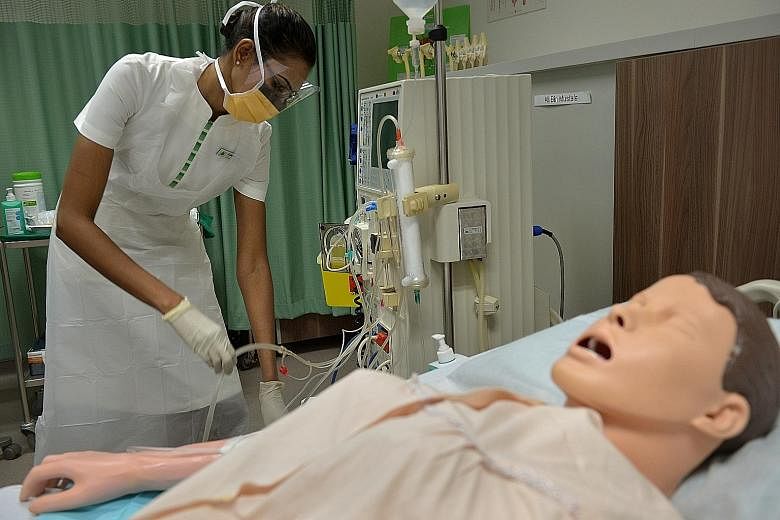The most disconcerting part about the hepatitis C outbreak in Singapore General Hospital (SGH) wards is not so much that it happened. That is unfortunate and regrettable, even tragic, given the seven deaths that were possibly caused by the virus.
What is troubling is that, having discovered the spread of the virus, and having taken steps in June to tighten infection control in the affected wards, a team sent in by the Independent Review Committee to check on the processes still found lapses in infection control.
These checks were made between Oct 15 and Nov 11 - about four months after the hospital took steps to prevent the continued spread of the virus.
Yet on Nov 2, a spot of blood on the wall of the preparation room - which has to be super clean as it is where medicine is prepared for intravenous use - had traces of the hepatitis C virus (HCV).
And all this happened in a renal ward with transplant patients - where greater care is expected because their immune systems have been compromised and they are at greater risk of catching infections than other patients.The team found that staff did not clean medical carts and trolleys properly before pushing them into the preparation room, and stains were found on them, as well as on other surfaces. It also found hand hygiene wanting.
These lapses raise the inevitable question: If the staff do not exercise proper care in a renal ward, how do they behave in a normal ward? And does this happen in other hospitals?
The hepatitis C infection was spotted because it is not that common. And because transplant patients have lower immunity, the infection showed up quite quickly.
But if protocols are not followed, patients in normal wards can contract a whole range of viral, fungal or bacterial infections, with no one being the wiser.
Acquired infections occur all the time in hospitals. Hospitals try to combat them by improving hygiene among staff and visitors.
Disinfectants are placed throughout hospital buildings so anyone can disinfect their hands and staff are told to wash their hands properly between patients, and to change their gloves with each new patient.
These precautions are of no use if the staff caring for patients are not scrupulous in practising good hygiene. While it is too late to change what might have happened, now is a good time for all hospitals to review their practices, and not assume such lapses occur only at SGH.
Part of this review must include explaining the dangers of certain practices, because expecting staff to follow instructions without explaining why they need to do so is a recipe for failure.
One failing the team found was staff removing the cap of the intravenous tube - which is faster than using the side port. But the report said doing so exposes the patient to contaminants entering the bloodstream. It also allows bugs from the patient to enter the environment.
But this is not obvious to the layman, and possibly even to some healthcare staff.
Explaining, or better still, showing how such contamination can occur will make everyone realise that the bosses are not "being difficult" when they make staff follow protocol, and that this is something that ensures the safety of patients.
This cannot just be a one-off exercise today. It must be done with every new batch of employees.
Only when concrete steps are taken to ensure that such mistakes do not happen again can we say that we have learnt from events at SGH, and that the healthcare system has been strengthened as a result.



